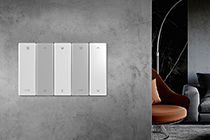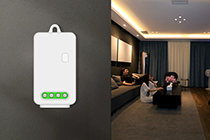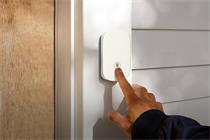Wireless control and wired control are two common control methods in the field of modern technology, and they have certain advantages in different scenarios and applications. In this paper, we will analyze the advantages of wireless control over wired control from several aspects to help readers better understand the characteristics and applicable scenarios of these two control methods.

First of all, one of the biggest advantages of wireless control is flexibility and portability. Wireless control is not limited by cables and can realize remote control in a wider range. This is critical for applications such as mobile devices, smart homes, and robots. Wireless control gives users the freedom to operate devices without space constraints, increasing ease of use. For example, wireless remotes make it easy to control devices such as TVs and stereos without the need to point them directly at the device or deal with complex cable layouts.
Secondly, wireless control has obvious advantages in terms of wiring. In the traditional wired control system, complex cable laying and connection are required, which not only increases the difficulty of the project but also may affect the aesthetics. Wireless control does not require cumbersome wiring, which can save a lot of human and material resources. Especially in some historical buildings or rental sites, wireless control is more suitable, which can reduce the intrusiveness of the building structure.
Third, wireless control offers greater flexibility and expandability. Whereas adding or changing equipment in a wired system usually requires rewiring, a wireless system allows access to new equipment or expansion of functionality through simple software upgrades or configurations. This provides greater flexibility for system maintenance and upgrades, reducing cost and effort. In a smart home system, users can achieve compatibility with new devices through simple app updates without having to worry about physical connections.
In addition, wireless control is characterized by strong anti-interference capability. Since wired transmission is susceptible to electromagnetic interference, cable aging, and other issues, wireless control performs more reliably in some special environments. For example, wireless sensor networks in industrial automation can operate stably in harsh operating environments, while wired systems may require more frequent maintenance and upkeep.
In addition, wireless control performs well in disaster recovery and emergencies. In emergencies such as earthquakes and fires, wired devices may be rendered useless due to cable damage, while wireless control devices can better maintain communication and improve the efficiency of emergency response. This is significant in some critical locations such as hospitals and emergency command centers.
However, it is worth noting that wireless control has some challenges and drawbacks. Firstly, wireless communication may be subject to interference, such as signal fading and spectrum congestion, which may lead to unstable communication. Second, compared to wired systems, wireless systems typically consume more energy and may require more frequent battery replacement or recharging, which can be a test for some applications that need to operate for long periods.
To summarize, wireless control has a series of advantages over wired control, such as flexibility, portability, easy wiring, flexible expansion, anti-interference, and more reliability in emergencies. In different application scenarios, you can weigh these advantages and disadvantages according to the specific needs, and choose the appropriate control method. With the continuous development of science and technology in the future, wireless control technology is expected to further improve, providing more efficient and convenient solutions for more areas.

 CN
CN








 Home
Home DFM
DFM  Jan 19,2024
Jan 19,2024 
 Start the New Year with a Wireless Kinetic Switch
Start the New Year with a Wireless Kinetic Switch 
 Jan 17,2024
Jan 17,2024 












